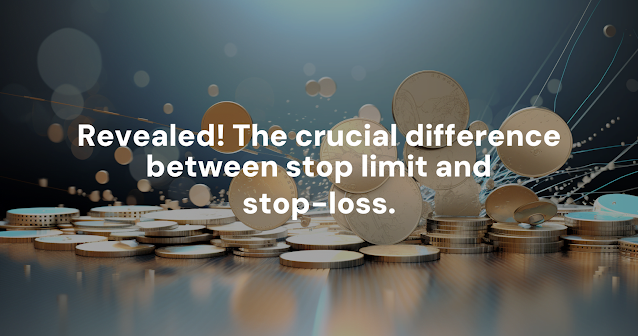1. Definition and Purpose
- Stop Loss Order: A stop loss order automatically sells your stock once it reaches a certain price. This order is triggered once the stock hits the stop price, and it becomes a market order, meaning it will sell at the best available price immediately after.
- Stop Limit Order: A stop limit order combines a stop price and a limit price. When the stop price is reached, the order becomes a limit order rather than a market order. This means it will only sell at a specific price or better, giving you more control but no guarantee of execution.
Example: I once used a stop loss on a stock during a market dip to prevent further losses. It sold as soon as the price hit the stop level. On another trade, I set a stop limit to ensure it sold at or above a specific price, protecting me from selling too low.
2. Execution Guarantees
- Stop Loss: Because a stop loss becomes a market order after the stop price is reached, it has a high likelihood of execution, even if the price falls rapidly.
- Stop Limit: A stop limit order will only execute if the price remains at or above the set limit price. If the market drops too quickly, the limit order might not fill, leaving you still holding the stock.
Why It Matters: During a volatile market, a stop loss ensures your stock sells, but possibly at a lower price than expected. A stop limit, while offering control over price, may not execute if the price falls too quickly.
3. Protection vs. Precision
- Stop Loss: It’s best for traders prioritizing protection from major losses over precision in pricing. This type of order sacrifices some control to ensure you get out of a losing position as quickly as possible.
- Stop Limit: Useful for those who prefer more control over the price at which they sell, even if it means the order might not execute. It’s ideal for markets that aren’t extremely volatile.
Personal Insight: I often use stop losses when trading in fast-moving stocks, as my main concern is avoiding significant losses. However, when trading slower-moving stocks, a stop limit order can help ensure I don’t sell too low.
4. Impact in Volatile Markets
- Stop Loss: In highly volatile markets, stop losses may execute at prices far lower than the stop price due to slippage (the difference between the expected and actual execution price).
- Stop Limit: During volatility, a stop limit may not execute at all if the market price gaps past the limit price, leaving you holding the stock even as it declines.
Example: I once had a stop loss on a volatile stock, but due to slippage, it sold for less than I anticipated. If I had used a stop limit order instead, I may not have gotten out at all if the price moved too quickly past the limit.
5. When to Use Each Order
- Stop Loss: Best when you’re more concerned with ensuring that you can sell, even if it’s at a lower price, especially during high volatility.
- Stop Limit: Ideal for when you want to control the minimum price at which you sell and are willing to risk the trade not executing if the price falls quickly.
Advice: I use stop losses for quick-moving trades where my main goal is to protect against large losses. For longer-term trades, I sometimes use stop limits to avoid selling during minor dips, as I have a target price I want to achieve.
Final Thoughts
Choosing between a stop loss and a stop limit order depends on your trading goals and risk tolerance. Stop losses are more straightforward and prioritize execution, while stop limits provide more control but no execution guarantee. By understanding the differences, you can decide which order type best fits your strategy and helps you manage risk effectively.

